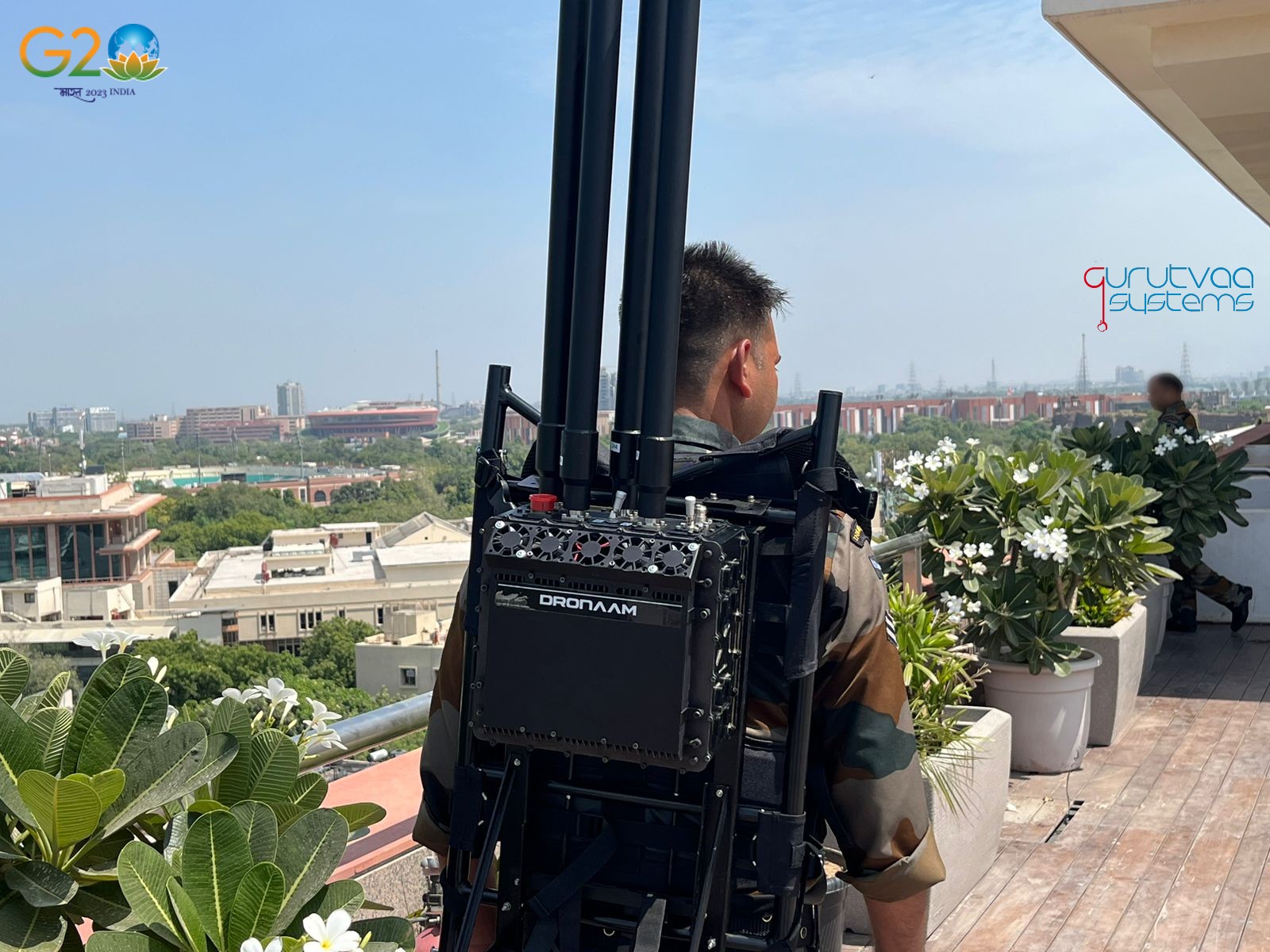SOURCE: IDRW.ORG TEAM

During the recent G20 summit, security measures were bolstered by the deployment of India’s indigenous counter-unmanned aerial system (C-UAS) known as Dronaam. Developed by the Indian private sector company Gurutvaa Systems, Dronaam played a vital role in providing security cover against rogue drones. This state-of-the-art system is designed to disrupt the navigation and radio frequencies of unauthorized unmanned aerial vehicles (UAVs), ensuring the safety of high-profile events and critical installations.
Dronaam, developed by Gurutvaa Systems, is a cutting-edge modular C-UAS designed to offer foolproof protection against illegal unmanned aerial systems (UAS). It is a versatile system that can provide directional or omni-directional coverage, making it suitable for various security scenarios. The system can be configured as a fully integrated rifle-style device or a portable countermeasure in a backpack configuration. It is equally effective in fixed installations, where it can be mounted on moving or stationary platforms, offering the option of directional or omni-directional coverage.
One of Dronaam’s primary capabilities is its ability to disrupt the global navigation satellite system (GNSS) navigation and jam radio frequencies used by rogue UAVs. This innovative technology effectively neutralizes the navigation and control systems of commercial drones, rendering them incapable of carrying out their intended missions. By providing this soft-kill solution, Dronaam ensures that unauthorized drones are unable to operate within secured areas.
Gurutvaa Systems’ Dronaam represents a significant step forward in the field of counter-unmanned aerial systems. As drones become increasingly accessible and their applications diverse, the need for effective countermeasures has grown. Dronaam’s adaptability, portability, and jamming capabilities position it as a versatile and vital tool for security forces, critical infrastructure protection, and event security.
NOTE : Article cannot be reproduced without written permission of idrw.org in any form even for YouTube Videos to avoid Copy right strikes